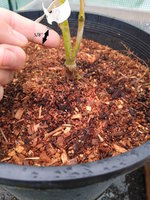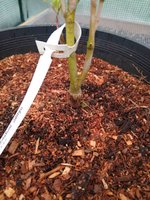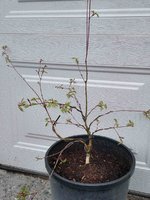I’m not saying the soil nurseries use is somehow substandard. It’s perfectly fine for the growing conditions of the nursery where they put their trees inside a hoop house when the cold and wet fall arrives (if the tree is unsold, that is — they typically have deep discounts on trees in the fall, as they would rather sell them to avoid the labor and storage costs). Nursery soil mix is also just fine for the overwhelming majority of their customers who aren’t going to keep the tree in a pot for more than a couple weeks at most before planting in the ground.I realize that nursery practices in the US are not completely the same as in Europe. But here in the Netherlands, nursery plants need to be absolutely of the highest quality, or else no one will buy them as the competition does have superior plants.
On top of that, the soil or substrate cost will not really be relevant compared to costs for labour, infrastructure, transport, fertilizer, etc. Whatever type of dirt you use, it is going to be dirt cheap. They will all be cheap. And whether you put pine bark, lava rock, perlite, peat, sharp sand or whatever in a bag, that all doesn't really matter. The main cost will be for putting that stuff inside a bag inside a factory and then shipping it to the customer. Not the cost of what is inside.
The idea that nurseries are using inferior soil because it is cheap so they can make more profit on lower quality plants just doesn't make sense. If it was better for them to use substrate, they would. If they needed more drainage to grow a better maple, they would have added lava rock.
Doesn't mean a tree can't get too wet in a nursery pot. Some places indeed get a ton of rain, much more than what they would get when irrigated inside a hoop house. And overpotting is a problem.
But in general, for growing normal plants aka broadleaf evergreens, fresh peat or pine bark is superior to substrate or lava rock when you grow outdoors. When you have a more controlled environment with fertigation, then you could use substrate/hydroponics. Cacti and some conifers that need way more drainage are also different of course.
Doesn't mean you can't mix in substrate when you grow JMs in nursery pots. It all depends on your climate and your watering regime. But when you get a nursery plant in fresh soil, that soil is generally good. There's no reason to go to 'bonsai soil' aka substrate.
The thing to worry about with a nursery plant/tree is if it has already been way too long inside that pot and it ought to have ben repotted already. That definitely doesn't seem the case here. Whether this specific maple is over-potted, I'll leave that to the JM experts.
Bonsai is entirely different. The issue is the very shallow pot and the limited amount of roots. Which requires daily watering and even morning and afternoon watering in summer. Which means that using soil, it would get too wet. The margin of error is way smaller because of the limited root volume. So you use fast-draining substrate and you water all the time.
I am saying that nursery mix sucks as a substrate for growing bonsai in a cold, wet climate (unless you have a cold greenhouse where you can keep the tree out of the rain).




